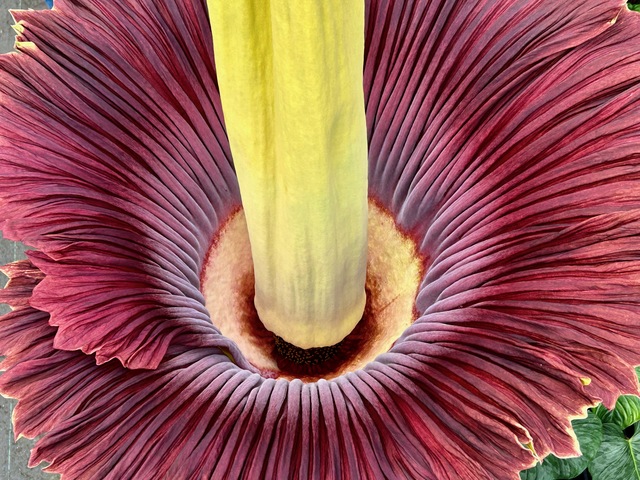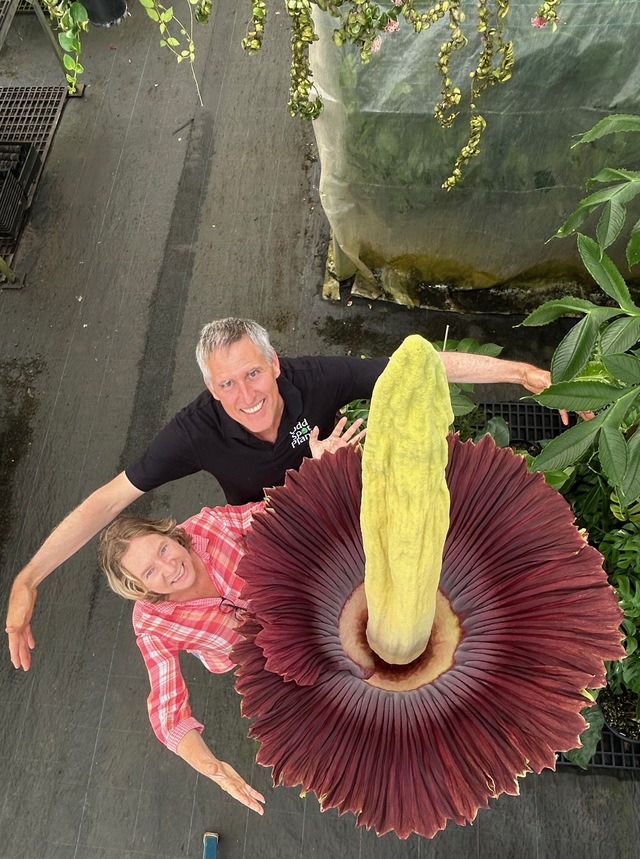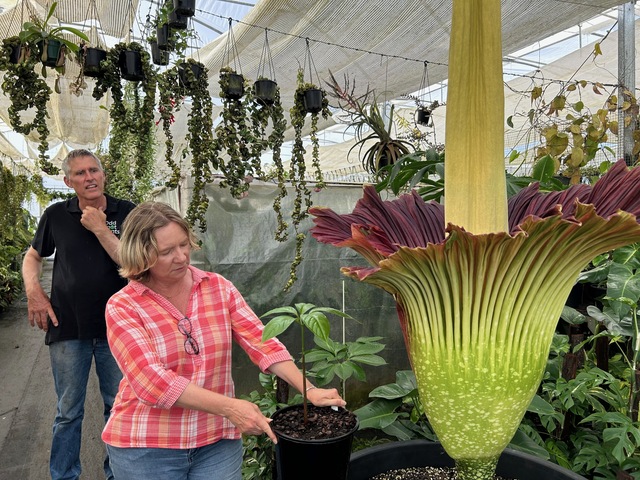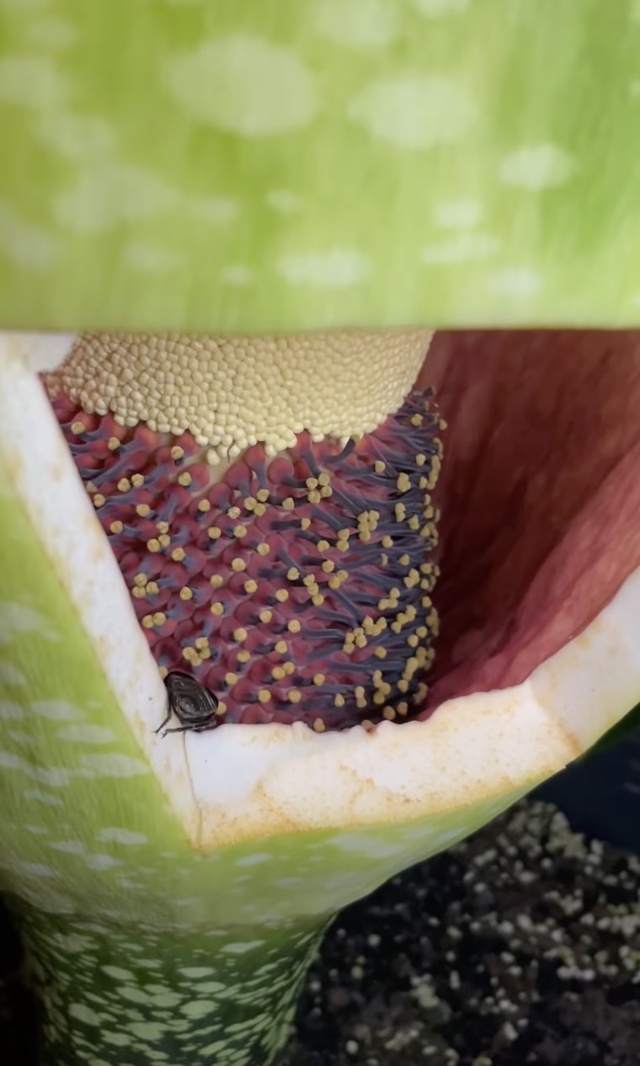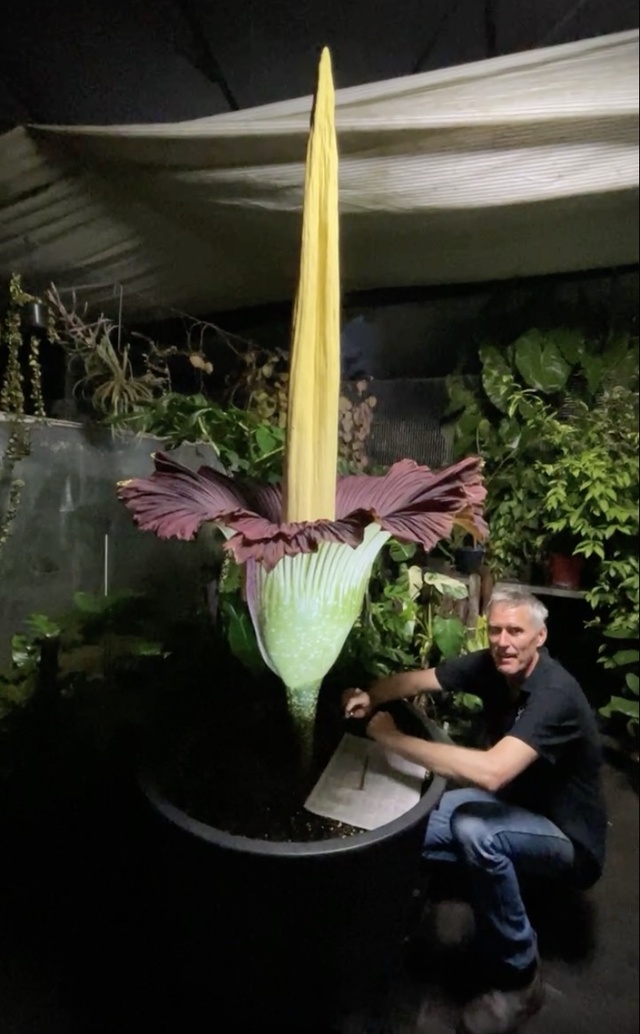
Neil and Lisa Paterson have some rare and unusual plants at their Goomboorian nursery but few as odd as the Titan Arum or Corpse Flower.
Amorphophallus titanum has the largest unbranched inflorescence (flower) in the world.
It has taken five years to flower at Odd Spot Plants nursery and it blooms for one night. For four years it sent up a single branch but now in its fifth year it has developed a flower.
Normally this can take anywhere between five and 10 or 12 years, depending on growing conditions and the bulb.
With its unique flesh-like, deep red petals and pungent rotting carcass aroma, the flower attracts pollen-transporting insects.
This year the plant sprouted in November and by New Year’s Eve when it was 1.5m high, Neil and Lisa determined it would flower.
In the following seven days it grew to 2.2 m tall. Two men more than six feet tall can barely reach around it together.
“This plant needs a big space,” Neil said. “It’s not something to grow in your lounge room.”
In the days leading up to Tuesday it dropped four outer leaves, increased its temperature , the size of the female part of the plant grew bigger, and the flower had contractions.
Named Xena, after The Warrior Princess, its parents Neil and Lisa could not be more proud of their ‘baby’ after having nurtured it for so long.
Now that it has flowered, the male part of the plant – the spike or spadex – will wither and collapse.
A new flower is expected to bloom in another two or three years.
The plant can be found in botanic gardens – most recently at Cairns and earlier in the year at Geelong. There are reported to be less than 1000 world-wide.
“They are rare in botanic gardens,” Neil said, “and even more rare for individuals like ourselves to have one that flowers.”
Native to the Indonesian island of Sumatra, the likelihood of another plant nearby in Goomboorian meant Neil was going to hand pollinate and hopefully set seed.
“The fruits (seed inside) will take a few months to ripen.,” Lisa said. “So the spike (spadix) and the skirt (spathe) will fall away – Neil will probably cut them off, so rotting material cannot interfere with the seed production.
“Once the seed has been collected, it will then send up a new leaf.
“There is a chance that the setting of seed can kill the bulb by using too much energy up, but we are confident it will be fine.
“How many leaves in between the next flowering? That is anyone’s guess.
“It depends on how much energy it uses this time and how much energy it can get from each new leaf.”
The flowering was both exciting and fascinating to watch, Lisa said, especially over the timeframe from November when it started to sprout.
The colours are amazing – the bright green at the bottom, the rich red inside the skirt – beetroot red Neil described it – and the yellow spike.
On Tuesday night Neil needed to act like a brain surgeon as he made an incision in the green leaves to pollinate the female flowers.
During the flowering there were bursts of the scent but not as off-putting as expected. Yet the smell and the colour still managed to attract carrion beetles, which is the way pollination would occur in the islands of Indonesia.
For added interest, there are two other potted plants beside it.
One is a baby version of the Corpse Plant, and the other is of the same genus but it smells like a dead mouse.
The timeline of our Amorphophallus titanum (Corpse Flower)
January 2020 – Planted – Onion-size bulb
February 2020 – Leaf emerges
September 2020 – Leaf dies (nine months)
November 2020 – Planted
December 2020 – Leaf emerges
September 2021 – Leaf dies (11 months)
November 2021 – Planted
December 2021 – Leaf emerges
September 2022 – Leaf dies (11 months)
December 2022 – Planted (16kg)
January 2023 – Leaf emerges
July 2024 – Leaf dies (18 months)
November 2024 – Planted (38.7kg)
December 2024 – Flower emerges
January 2025 – Flower opens.

